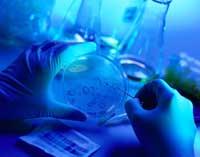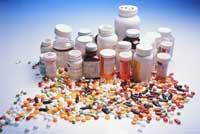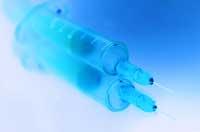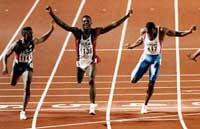Changing the genes in search of the perfect sport
2003/08/24 Kortabitarte Egiguren, Irati - Elhuyar Zientzia

Doping and genes united? Yes. The genetic doping resulting from the combination of both will give much to talk about in the future, as the doors gradually open. What is this new doping method based on? In short, its objective is to increase the performance of the athlete through the genes. That is, by introducing certain genes, it would help athletes who do not possess these genetic characteristics by themselves to increase their endurance and speed. In fact, advances in genetics have shown that genes also play a decisive role in this aspect. Do you not smell of gene therapy? In short, genes are being introduced into the cell genome that can alter the physiological characteristics of the athlete.
It is still being investigated, but the practice of genetic doping will make its detection impossible with current doping controls.
Although the process of genetic doping of an athlete is very complicated, explaining in a simple way the steps to follow in this process would be: First, we should identify and select genes related to the performance of each type of sport, isolate the gene and synthesize it in the laboratory, and then introduce the gene into a transporting substance. At the same time, by biopsy, doctors would remove the athlete's cells for growth and manipulation in the laboratory. In fact, doping genes would be inserted into these cells. Finally, by injecting transformed cells, these cells with new genetic materials would adapt to the body of the athlete.

Some pills and medications that are taken have dangerous side effects.
Therefore, scientists want to identify genes to form a perfect athlete: with a bright breath, a special body composition, that is, in short, with a body that allows victory when necessary. How lucky! Or misfortune?
Let everyone draw their conclusions. In fact, in the short term you will find it more profitable, but in the long term, obviously, it can harm you. In fact, although in medicine genes have been used to cure some disease, it is a research methodology that still has great difficulties to overcome it. For example, a simple and safe way to introduce the genes you want to use for therapy in the patient's DNA has not yet been found. In the most widespread technique viruses act as carriers.
But this method is not entirely safe, as they insert the gene anywhere in the DNA chain. Other genes with adverse effects have sometimes been activated. Example of this is the case of children with bubbles who had in France the lack of a gene. In order to combat this disease, these children were introduced the missing gene and it activated a nearby oncogene, so two of them developed leukemia. The challenge of experts will be to overcome these barriers.
But what is doping?

But what does the word doping mean that is becoming common in media sports? According to the International Olympic Committee, doping is currently taking foreign substances to the body to improve its physical performance, or adopting non-foreign methods. For ethical and health reasons, doping is prohibited in sports. In fact, one of the pillars of sport when it comes to racing is parity, and doping breaks that parity. On the other hand, although in the short term it improves the performance of the human body, in the long run it is considered harmful, due to the dangerous side effects of some of the products considered.
Therefore, a substance or method is considered doping when it comes to a foreign or abnormal substance for the human being or has been taken in doses, produces a temporary improvement in performance and is harmful to health. The last condition is the one that causes the most incidences in the list of prohibited substances. And it is really difficult to determine what is wrong, especially if you want to look long term. The consequences of many substances are unknown because they have not been thoroughly studied, and many of the studies have provided contradictory data.

The Medical Committee of the International Olympic Committee publishes a list with doping. This list includes different categories: doping products, doping methods and prohibited substances. Among the doping products, besides cannabis and alcohol, there are narcotic analgesics, stimulants, beta-blockers, diuretics, anabolic steroids and hormones, among others. Blood transfusions, drugs and drugs, among others, are used to increase performance. Finally, among the prohibited substances would enter many of the aforementioned.
Although many times when talking about doping refers only to certain sports, it is clear that each athlete has the possibility to find the ones that best suits him. The parts of the body to be treated vary greatly from sport to sport.
Published in 7K.

Gai honi buruzko eduki gehiago
Elhuyarrek garatutako teknologia






